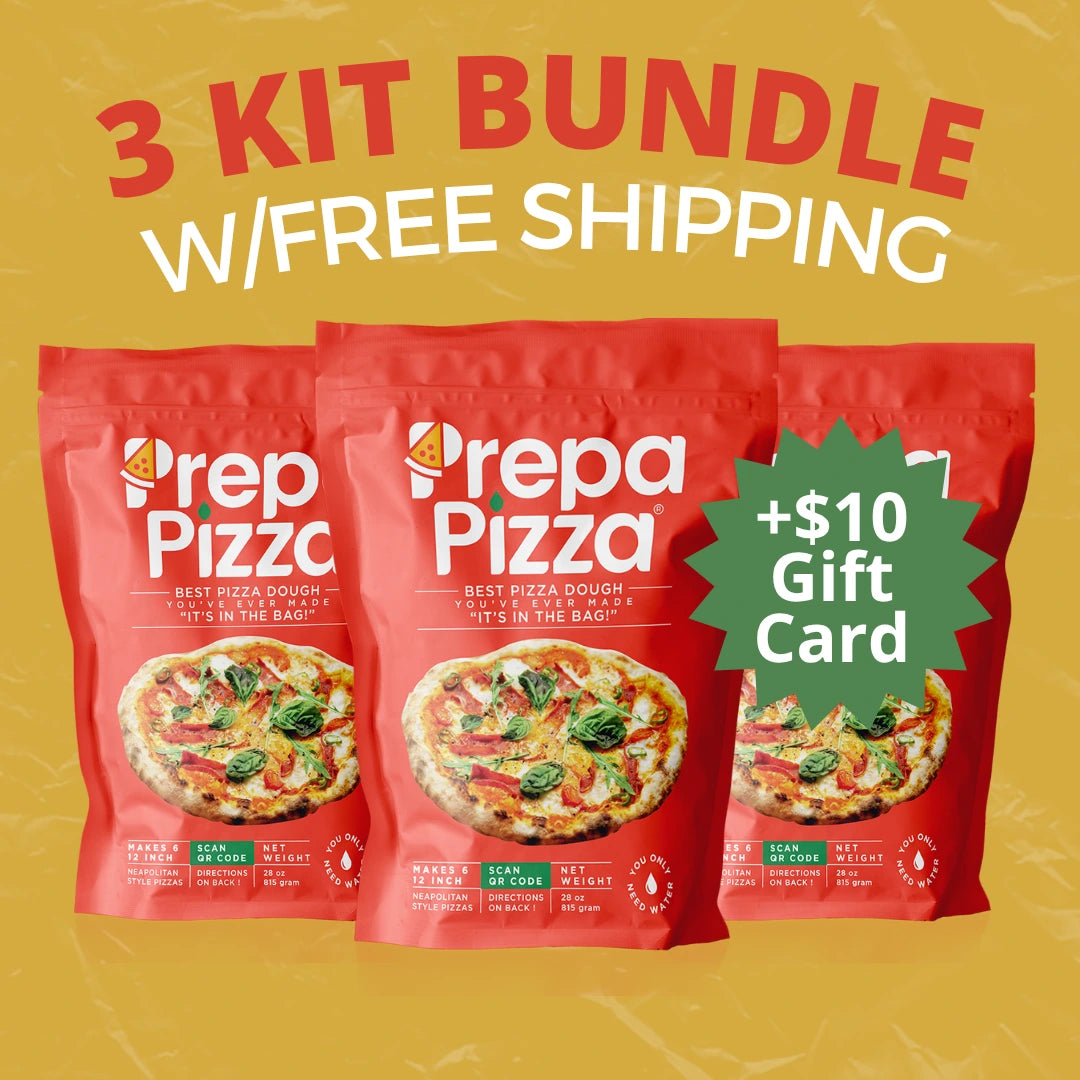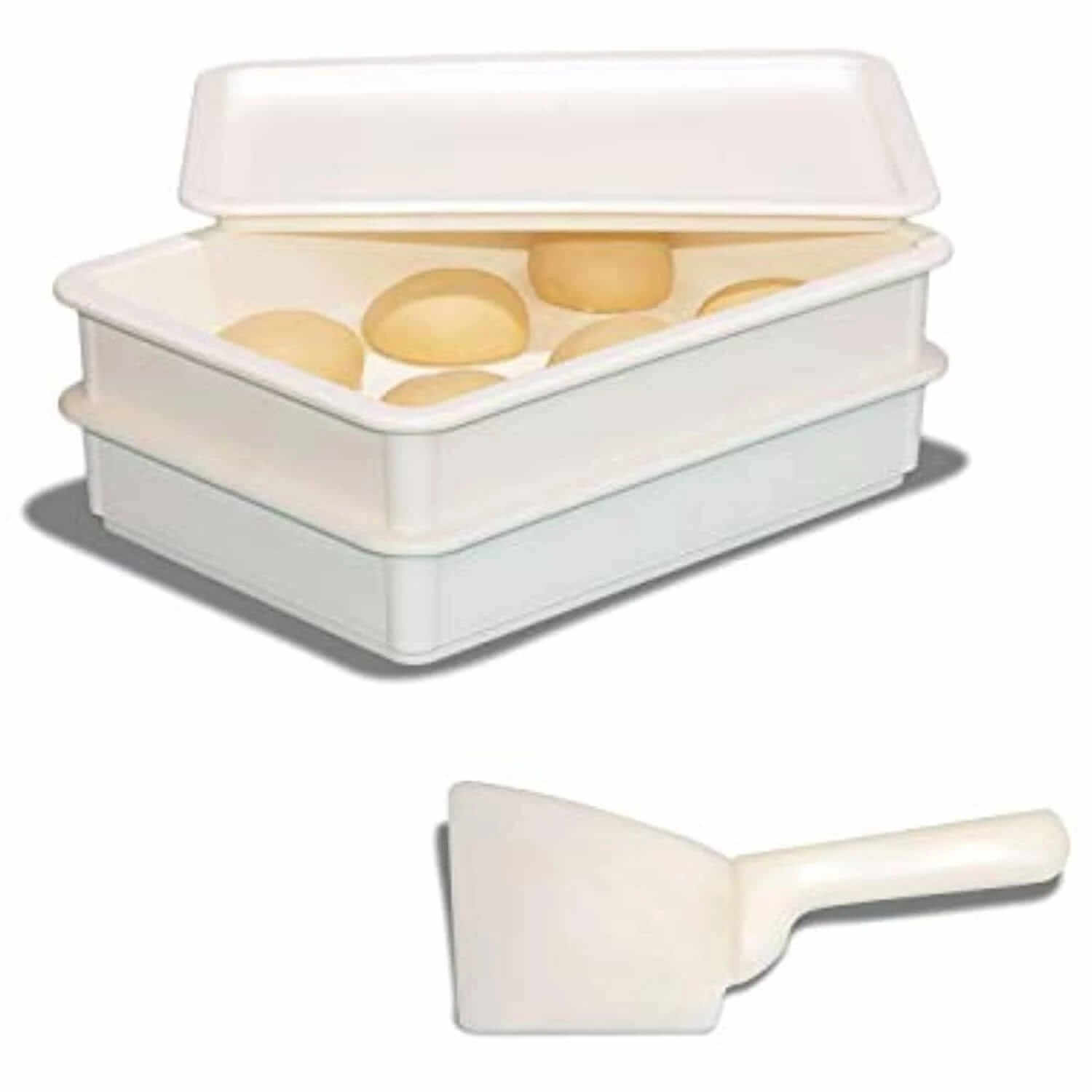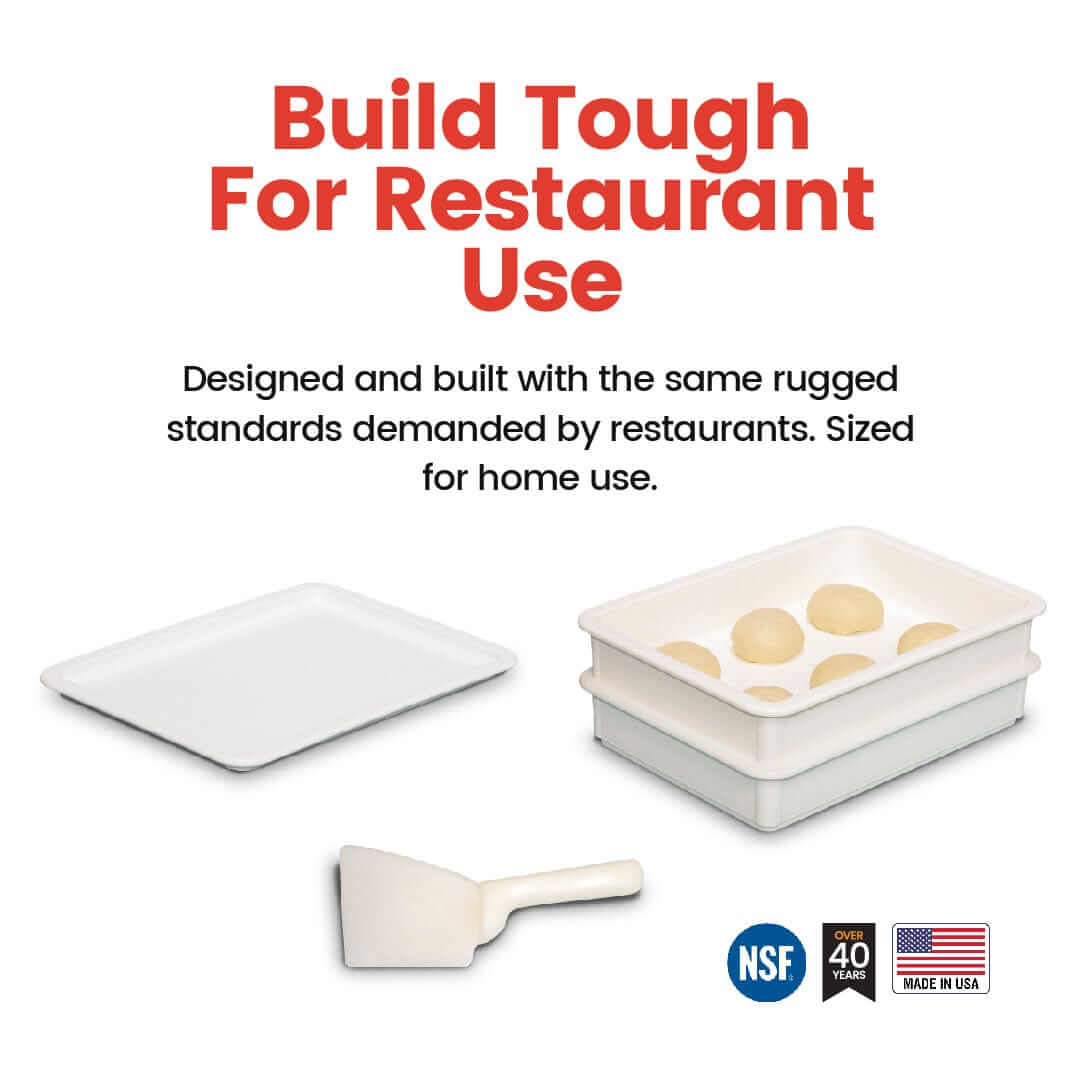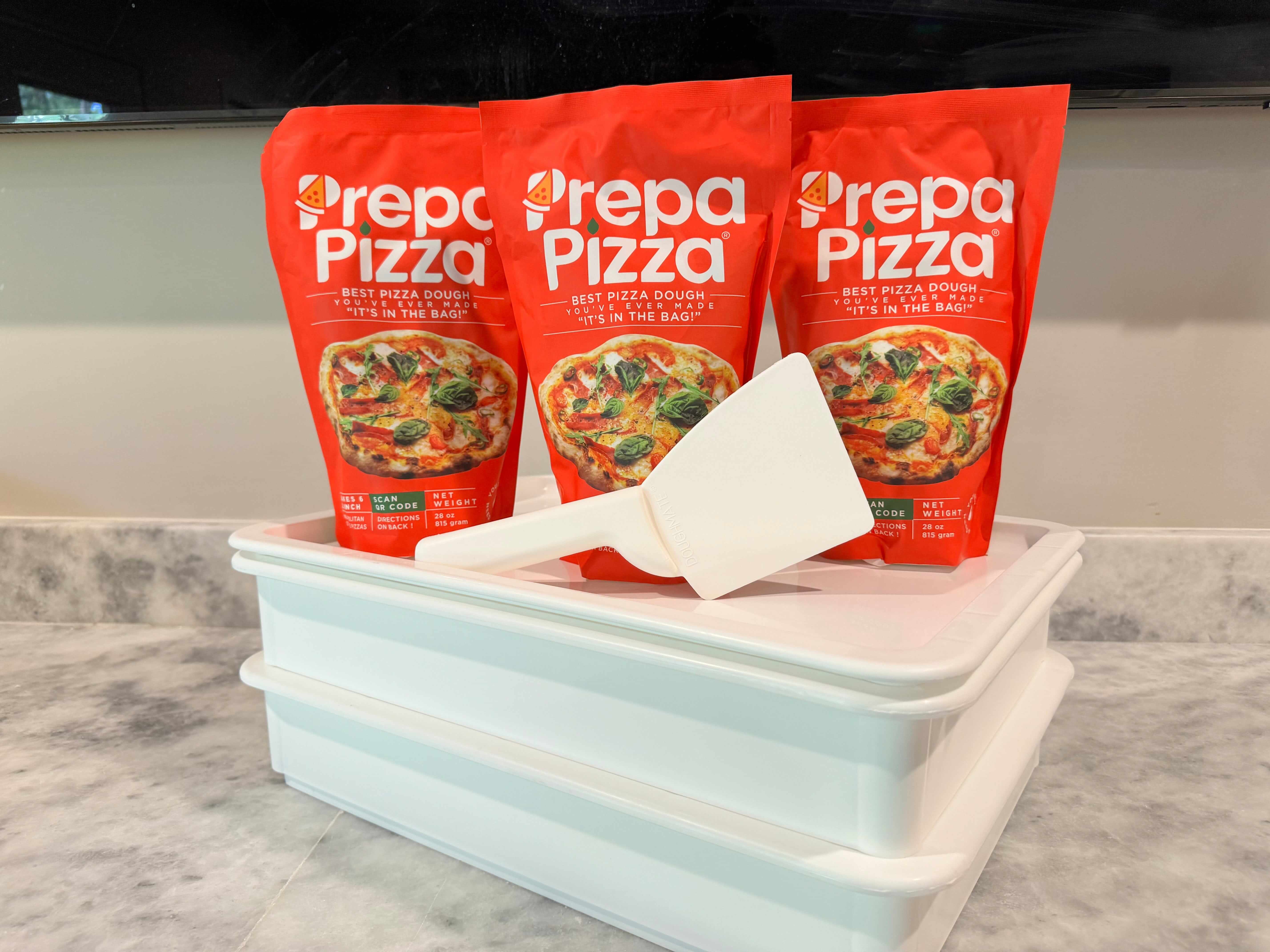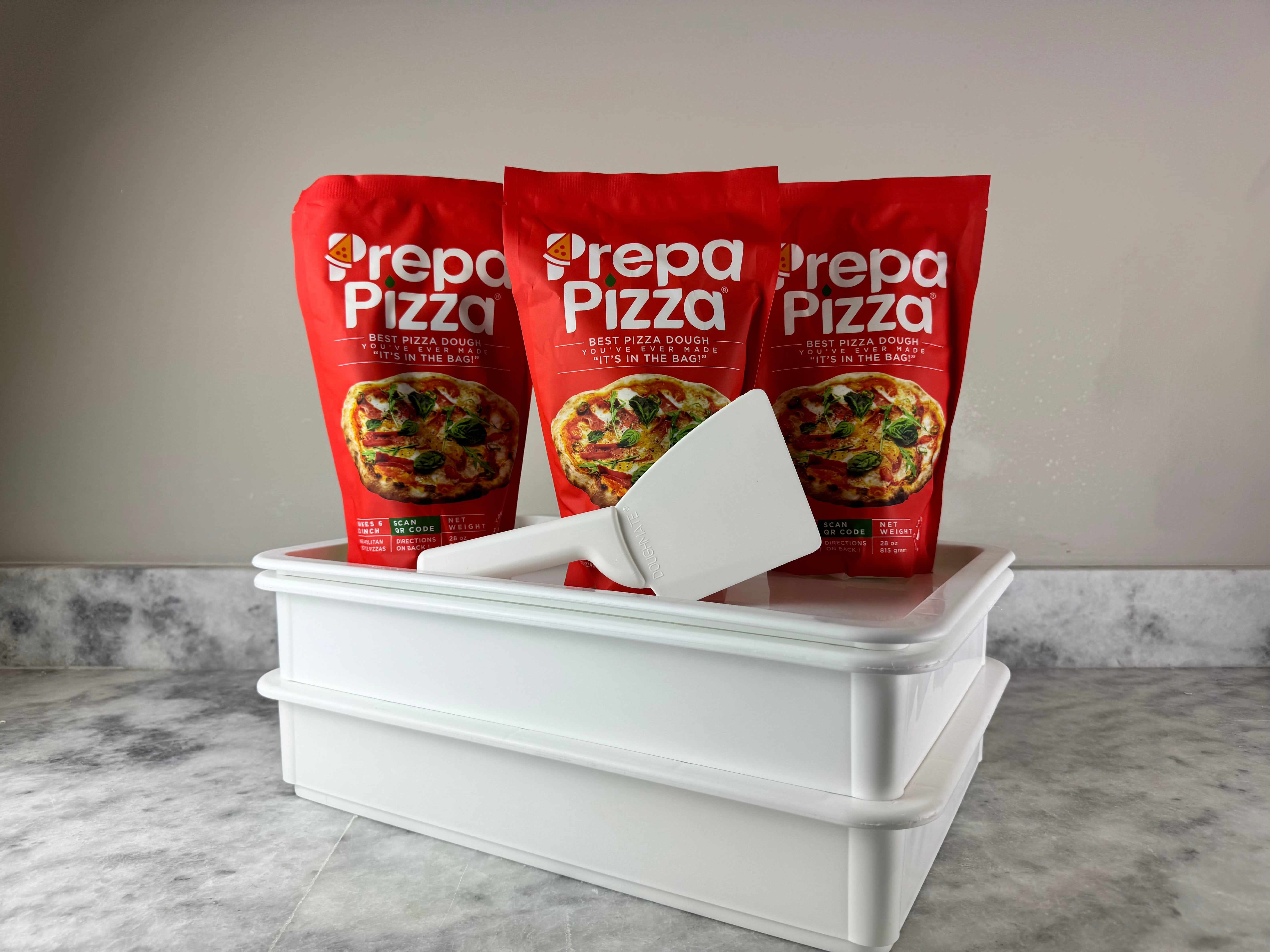
Baked Crust Tips for Achieving Perfect Texture and Flavor
Getting the perfect baked crust can make or break your pizza experience. Whether you’re aiming for crispy edges or a tender, flaky base, controlling temperature, using the right dough, and proper baking techniques are key to a great crust every time. Using a high-quality premade dough like Prepa Pizza’s ensures you start with a reliable foundation made from premium ingredients designed for restaurant-quality results.
If you want to simplify your pizza-making process without sacrificing taste or texture, Prepa Pizza’s premade dough kit is an excellent choice. It takes the guesswork out of dough preparation and lets you focus on baking your crust to perfection. You can explore how their dough performs and fits into your baking goals at Prepa Pizza dough kit.
Mastering baked crust tips means understanding the balance of moisture, heat, and timing. This article will guide you through essential practices to get your crust beautifully browned and satisfyingly textured, whether you bake your pizza at home or in a professional setting.
Essential Ingredients for a Perfect Baked Crust
Creating a pie dough or pizza crust with the right texture hinges on a few critical ingredients. Each one plays a specific role in ensuring the final crust is flaky, tender, and flavorful. Using high-quality premade dough like Prepa Pizza’s dough kit can give you a head start with premium ingredients but knowing the essentials helps you appreciate what makes the dough work.
You will find that flour, fat, and seasoning balance form the foundation of any great crust. Understanding how these components interact can elevate your baking results significantly.
Choosing the Right All-Purpose Flour
All-purpose flour is the backbone of your pie dough or pizza crust. Its moderate protein content provides enough gluten development for structure while still allowing tenderness. Using too high protein flour, like bread flour, can make your crust tough.
For flaky crusts, it’s important not to overmix after adding liquid. Proper measuring of flour also matters since too much flour can result in a dry crust. Prepa Pizza uses all-purpose flour in their premade dough to achieve that consistent texture you want.
You want flour that hydrates well but doesn’t create excess gluten, which can make rolling out the dough difficult. This balance helps you get an easy-to-handle dough with just the right chew.
Importance of Cold Butter
Butter is the key fat in your crust, delivering flavor and flakiness. The temperature of the butter is crucial; it should be very cold when mixed into the flour. When you cut cold butter into the flour, it creates small, unmixed pockets that steam and separate the layers during baking.
If the butter melts before baking, your crust will lose flakiness and become greasy or dense. Chilling your dough after mixing also helps keep these small butter pockets intact.
Prepa Pizza's dough uses premium quality butter, chilled to preserve that flaky texture. When working with any dough, maintaining cold butter is one of the easiest techniques to improve your crust.
Salt and Sugar Balance
Salt is a small but vital addition that enhances the flavors of the flour and butter without making your crust salty. Just a pinch provides balance and depth to your baked crust, improving overall taste.
Sugar is optional but can lightly tenderize the dough while adding subtle sweetness and better browning. Using too much sugar can interfere with gluten development, so it’s best to keep it minimal if included.
In Prepa Pizza premade dough, the salt and sugar quantities are carefully measured to optimize flavor and texture. When you make dough from scratch, aim for small, precise amounts: typically a quarter teaspoon of salt and a teaspoon or less of sugar per batch for best results.
Pie Dough Preparation Techniques
Preparing pie dough requires attention to detail and careful handling to achieve a flaky, tender crust. Whether you’re working with homemade dough or using Prepa Pizza’s premium quality premade dough, the approach to preparation affects the final texture and ease of rolling.
Using a rolling pin properly and controlling temperature throughout the process helps maintain the dough’s structure. Prepa Pizza offers restaurant-quality dough that can simplify your preparation while still allowing you to apply essential techniques for optimal results. You can explore their dough options here.
Cutting in Butter for Flakiness
Flakiness depends largely on how you incorporate butter into the flour. You want to use cold, high-quality butter cut into small pieces to create pockets of fat in the dough. When baked, these pockets melt and produce layers.
Use a pastry cutter or two knives to cut the butter into the flour just until the mixture resembles coarse crumbs with pea-sized butter bits. Avoid melting the butter with your hands; keeping it cold is crucial to prevent greasiness and toughness.
If using Prepa Pizza’s premade dough, the butter content and preparation are already balanced, but understanding this step can help if you decide to modify dough texture at home.
Avoiding Overworking the Dough
Overworking pie dough develops gluten, which makes the crust tough and chewy instead of tender and flaky. Mix ingredients just enough to bring them together.
When handling dough, use gentle folding or pressing motions instead of vigorous kneading. Once combined, stop working the dough. You can use a rolling pin with light pressure to avoid compressing the dough too much.
If you use Prepa Pizza dough, much of this concern is alleviated since it’s prepped for ideal texture, but minimal handling is still recommended when shaping.
Proper Dough Rest and Chilling
Resting and chilling the dough is essential for hydration and gluten relaxation. After mixing, wrap the dough tightly in plastic and chill it for at least 30 minutes, ideally an hour.
This step firms the fats and makes rolling easier without tearing. It also improves flavor by allowing flour to hydrate evenly.
If you opt for Prepa Pizza’s premade dough, it’s ready to use but chilling briefly before rolling can improve handling and flakiness. Use your rolling pin to roll gently after resting for best results.
Rolling, Shaping, and Transferring Pie Crust
When working with pie dough, controlling thickness and handling the dough carefully are crucial for a successful crust. Using quality, premade dough like Prepa Pizza's ensures consistent texture and flavor, helping you focus on technique rather than preparation. Their premade dough kit uses premium ingredients for reliable results every time, available at Prepa Pizza dough kit.
Mastering rolling, shaping, and transferring the dough properly reduces tearing and uneven crusts. Attention to detail will give you a flaky, evenly baked pie shell that holds your filling perfectly.
Effective Rolling Methods
Start by chilling your Prepa Pizza premade dough slightly before rolling. Lightly flour a clean surface and your rolling pin to prevent sticking without adding too much extra flour. Roll from the center outward, turning the dough frequently to maintain a round shape.
Aim for an even thickness of about 1/8 inch. Thick edges can make the crust doughy; too thin increases risk of tearing. Use gentle, even pressure to avoid compressing the dough, which can toughen the crust.
If the dough shrinks when rolling, let it rest for a few minutes to relax the gluten. A cooled rolling pin also helps maintain consistent temperature and dough texture.
Transferring to Pie Plates and Pie Dishes
To move the dough without tearing, lightly roll the dough around the rolling pin once it's at the right size. Position it over your pie plate or dish, then carefully unroll it to cover the bottom and sides evenly.
Avoid stretching the dough to fit; this causes shrinkage during baking. Instead, gently ease it into place, allowing slight overlap over the edges. Prepa Pizza's premade dough maintains elasticity, making this step easier.
If any tears occur, patch them with small dough pieces pressed gently in place. Chill the crust briefly in the plate before filling to reduce shrinking and bubbling.
Trimming and Shaping Edges
Trim excess dough, leaving about a 1-inch overhang beyond the pie plate edge. This extra dough gives room for shaping without risk of dough falling inside the pan.
Fold the overhang under itself, creating a thicker edge that seals the crust. From here, you can crimp the edges using your fingers or a fork for both function and decorative appeal.
Shaping the crust also protects against burning and moisture loss during baking. Keeping edges uniform in thickness helps the whole crust bake evenly. Prepa Pizza dough’s balance of ingredients aids in creating strong, pliable edges that hold their shape well.
Mastering Blind Baking and Par-Baking
Achieving a perfectly baked crust starts with mastering both blind baking and par-baking techniques. These methods are essential for ensuring your pie crust stays crisp and firm, especially when using fillings that might otherwise make the crust soggy. Using Prepa Pizza’s premium quality premade dough, available here, simplifies this process by delivering consistent results with restaurant-quality ingredients.
Understanding when and how to apply these methods will improve your crust’s texture and overall appearance, making your baking projects more reliable and enjoyable.
Blind Baking Fundamentals
Blind baking means baking your pie crust completely before adding any filling. This technique is crucial for pies with fillings that don't require baking, like custards or cream pies. Start by chilling your dough to help it maintain shape and prevent shrinkage.
Line your crust with parchment paper or foil, then fill it with pie weights to weigh it down. Bake until the crust is golden and fully set, usually about 15-20 minutes at 375°F (190°C). Removing the weights halfway through helps the crust brown evenly. Blind baking with Prepa Pizza premade dough is especially effective because of its consistent texture, which reduces cracking and uneven rising.
How to Use Pie Weights
Pie weights are essential to prevent your crust from bubbling or shrinking during blind baking. You can use ceramic beads, dried beans, or specially designed metal weights. After rolling out your dough and fitting it into the pie pan, line it with parchment or foil.
Spread the pie weights evenly across the base and up the sides. This keeps the dough pressed firmly against the pan for uniform baking. When baking your pre-made dough from Prepa Pizza, pie weights ensure the crust remains flat and crisp, matching professional standards. Weights should be removed halfway through cooking to allow the crust to brown but keep its shape intact.
Par-Baking Versus Full Blind Baking
Par-baking is a partial bake of the crust, usually stopping before it’s fully cooked. It’s used when the pie requires further baking with a wet filling that needs cooking along with the crust. Full blind baking, on the other hand, means baking the crust entirely before adding any filling.
For par-baking Prepa Pizza’s dough, bake with weights for about 12-15 minutes until the crust firms but is not browned. Then remove weights and bake 5 minutes more to set the surface. This prevents sogginess when the filling is added later. Full blind baking ensures crispness but is reserved for no-bake fillings to avoid overcooking.
Both methods improve crust texture but choosing the right one depends on the type of pie you’re making.
Tips for Golden, Flaky Results in Any Pie
Achieving a golden, flaky pie crust takes more than just good dough. You need precise control over moisture, temperature, and handling to avoid soggy bottoms, shrinking, or uneven browning. Using premium-quality premade dough, like Prepa Pizza’s dough kit, can simplify this process and improve consistency in your single-crust pies. With Prepa Pizza’s restaurant-quality ingredients, you’ll start with a strong foundation before applying the right baking techniques.
Proper preparation of your pie plates and managing your baking environment work hand-in-hand with high-quality dough. Before baking, make sure your work surface and tools are well-floured but not overloaded, and chill your dough adequately to maintain its flakiness.
Preventing Soggy Bottoms
Soggy pie crust bottoms occur from excess moisture seeping into the dough. To prevent this, blind bake your crust partially by lining it with parchment and weighting it with pie weights or dried beans. This removes moisture and firms up the base.
Another key step involves brushing an egg wash or melted butter over the prebaked crust to create a moisture barrier. Also, avoid overly wet fillings; drain fruits or precook custard fillings slightly to reduce liquid.
Using metal or glass pie plates ensures better heat conduction, helping to crisp the bottom more effectively than ceramic. Remember, baking on a preheated baking sheet or pizza stone further promotes an even bake in your pie crust.
Managing Shrinkage and Puffing
Shrinkage and puffing happen when the dough contracts or traps steam during baking. To reduce shrinkage, chill your dough thoroughly before placing it in the pie plate. Make sure to loosen the dough edges from the plate after rolling it out to avoid tight stretching.
Dock the dough base with a fork to allow steam to escape, preventing air pockets and puffing. Edges can be crimped or weighted carefully. Avoid overworking the dough to keep the gluten relaxed, which limits contraction.
Using Prepa Pizza’s premium dough ensures a consistent texture, reducing common shrinkage problems seen with lower-quality or homemade doughs that lack uniform hydration and gluten control.
Achieving Even Browning
Even browning depends on heat distribution and dough composition. To promote it, rotate your pie halfway through baking to ensure all sections get similar exposure to heat. Avoid placing pies too close to the oven walls where hot spots form.
An egg wash, made by whisking an egg with a tablespoon of water or milk, applied evenly before baking enhances color and sheen. Additionally, using a preheated pizza stone or baking steel beneath your pie plate accelerates bottom browning.
If edges brown faster than the center, use foil shields or a pie crust protector to cover them midway through baking to prevent burning without compromising the overall golden look. This balance ensures your pie crust stays crisp, flaky, and visually appetizing.
For consistent results, start your baking with premium premade dough from Prepa Pizza, available in their Prepa Pizza dough kit.
Crust Tips for Specific Pie Types
When working with different types of pies, adapting your crust technique is essential to get the best texture and structure. Using quality dough like Prepa Pizza’s premade dough, made with restaurant-quality ingredients, can simplify the process and improve your results. You can find this dough kit here.
The method you use for blind baking, chilling, or handling the crust will vary depending on the pie filling to prevent sogginess or uneven baking.
Custard Pies and Cream Pies
For custard pies and cream pies, preventing a soggy crust is key since the filling is liquid and delicate. Blind baking the crust before adding the custard or cream filling is essential. Use pie weights or dried beans to keep the dough flat and avoid puffing or bubbling during blind baking.
Chill the crust thoroughly after mixing and before rolling out to minimize shrinkage. Baking your crust in the lower third of the oven helps ensure even cooking without burning the edges. Consider brushing the baked crust lightly with egg wash to create a moisture barrier, which keeps the filling from soaking in.
Since custard and cream pies often don’t bake after filling, using Prepa Pizza’s dough helps because it is consistent and less prone to shrinking or losing shape during blind baking.
Fruit Pie Crust Strategies
Fruit pies require a crust that balances flakiness and durability to hold juicy fillings without getting soggy. Use a slightly sturdier dough and avoid overworking it to keep it tender but strong. Pre-chilling the dough is important to maintain flakiness and control shrinkage.
Bake fruit pies in the lower third of your oven to ensure the bottom crust cooks fully. You can also partially bake the bottom crust before adding fruit to prevent sogginess. Cover the edges with foil or a crust protector to avoid overbrowning, especially when baking longer for thick fruit fillings.
For fillings high in moisture, like berries or stone fruit, sprinkle the crust with a light layer of cornstarch or flour to absorb excess juice. Using Prepa Pizza premade dough adds reliability to your crust, matching the quality needed for wet fillings without compromising texture or taste.
Frequently Asked Questions
Getting a consistent, flaky pie crust or a crispy pizza base starts with the right ingredients and techniques. Using high-quality premade dough like Prepa Pizza’s premium dough kit can simplify the process while ensuring restaurant-quality results.
Temperature control, fat choice, and handling methods directly affect texture. For pizza, Prepa Pizza dough is formulated for optimal crispness even in a home oven.
What are the secrets to achieving a perfectly flaky pie crust?
Keep your fats and liquids extremely cold before mixing. Handle the dough gently and avoid overworking it to maintain the fat’s integrity.
Let the dough rest and chill in the fridge before rolling it out. This helps gluten relax and prevents toughness.
How can I prevent my pie crust from shrinking during baking?
Chill your pie dough thoroughly after shaping and before baking. Press the dough firmly into the pan and avoid stretching it.
Using a small amount of binder such as an egg can stabilize the dough and reduce shrinkage, maintaining the crust’s shape.
Is there a foolproof method for ensuring a crispy pizza crust in a home oven?
Preheat your oven to the highest possible temperature and use a pizza stone or steel to replicate restaurant heat.
Prepa Pizza’s premade dough is designed to crisp well at home, so starting with quality dough is key to a crispy finish.
What's the ideal thickness for a rolled-out pie crust to maintain texture and prevent sogginess?
Roll your crust to about 1/8 inch thickness. This allows it to bake evenly without becoming soggy or brittle.
Too thick dough takes longer to cook through, increasing the risk of a soggy bottom.
How can I avoid a soggy bottom in my quiche crust?
Blind bake your crust before adding the filling. Chilling the crust before blind baking tightens the dough to form a firm barrier.
Use baking weights to keep the crust flat during blind baking and reduce moisture seepage.
Which type of fat yields the best results for a tender, flaky pie crust?
Butter provides the best flavor and flakiness due to its water content creating steam during baking.
Shortening or lard offer flakiness but less flavor. Combining butter with shortening can improve texture without sacrificing taste.


